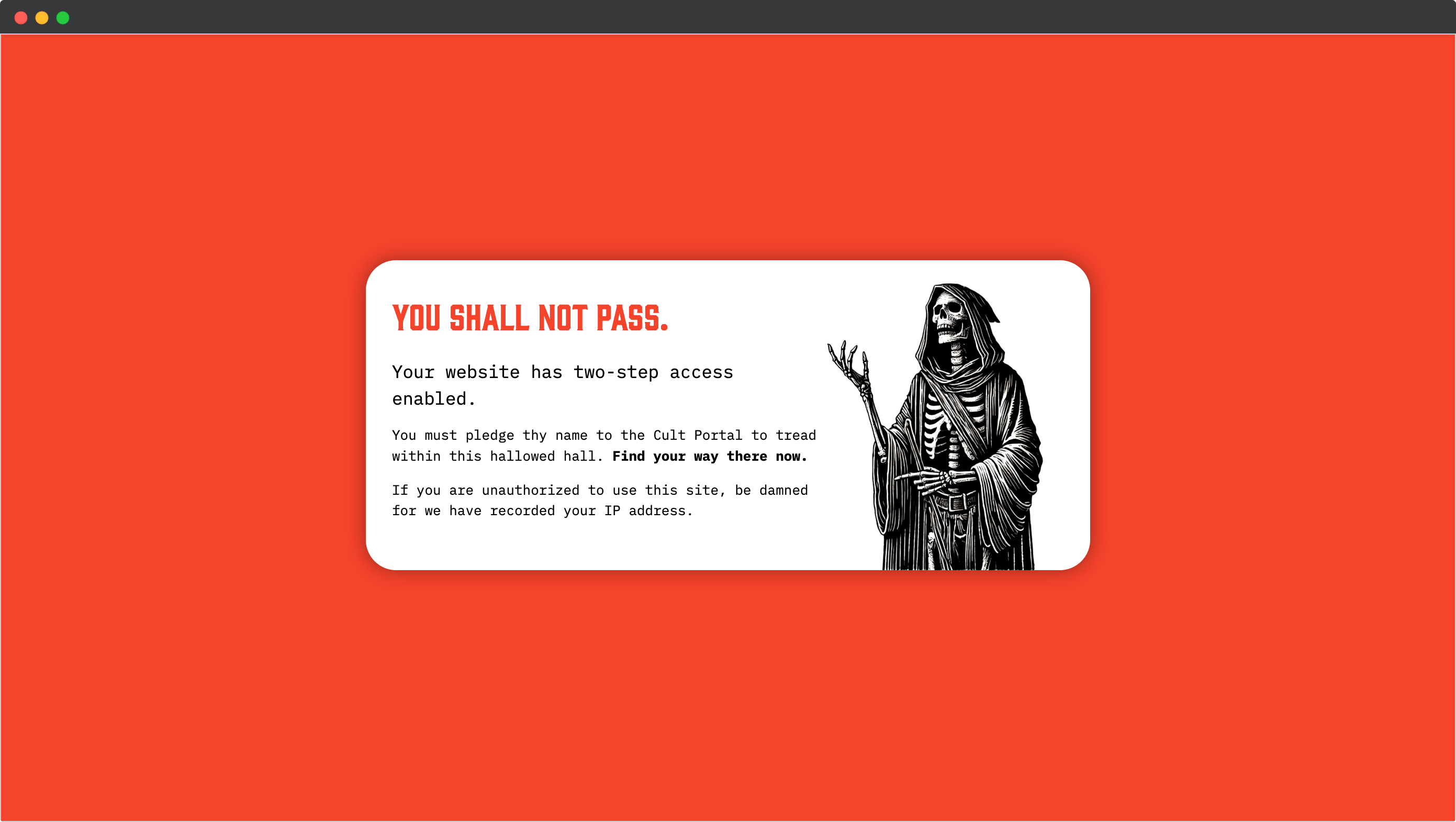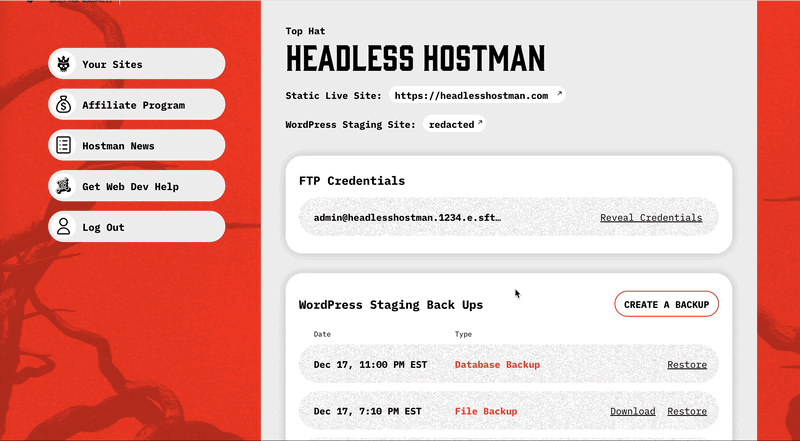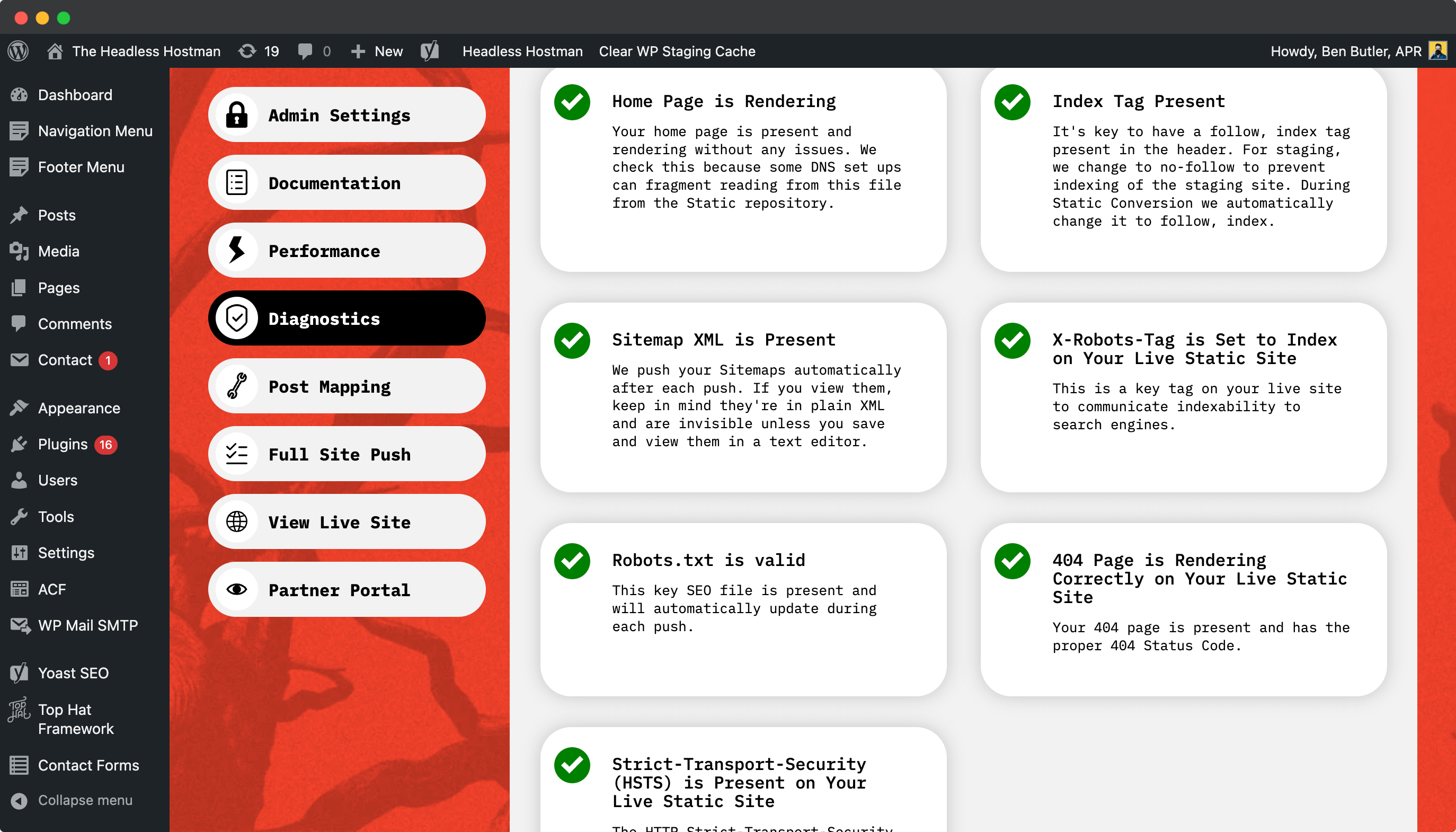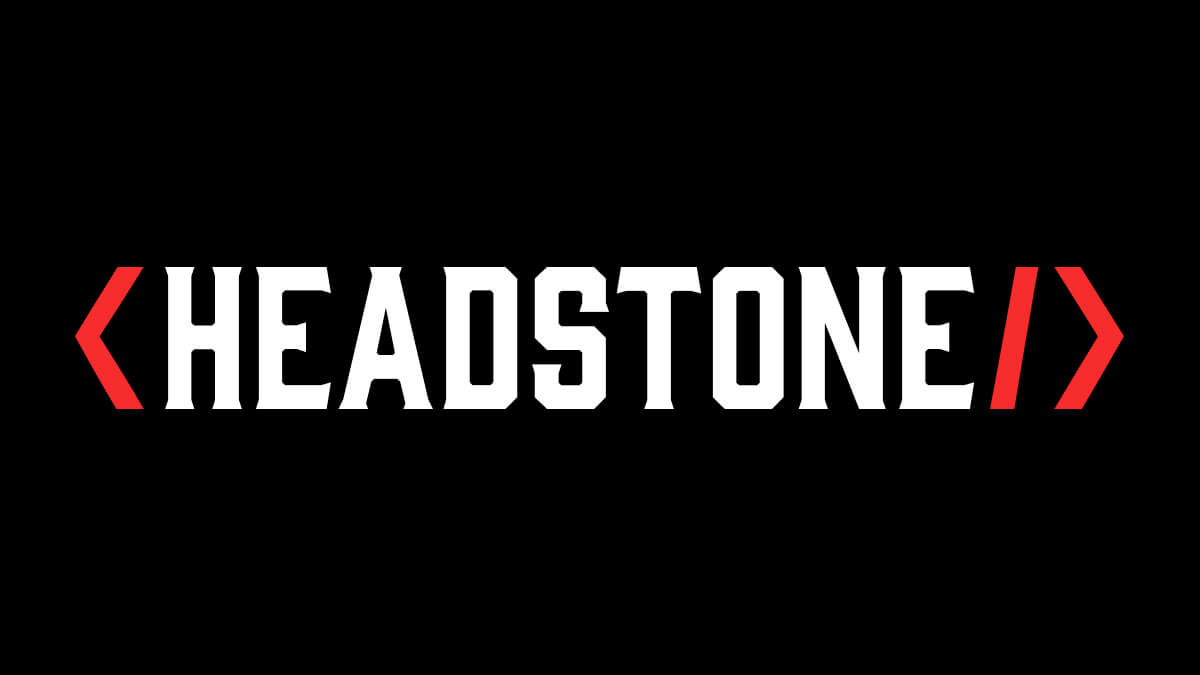Should a Business Continuity Plan Apply to a WordPress Site? Yes
If you’re running a business in 2025, chances are your website isn’t just a brochure—it’s your front door, your sales rep, your marketing funnel, and maybe even your cash register.
So here’s a question worth asking: should you apply a business continuity plan (BCP) to your WordPress site?
The short answer: absolutely, yes.
What Is a Business Continuity Plan (BCP)?

A business continuity plan is a strategy for keeping your business running during unexpected disruptions. Think of it as your “break glass in case of emergency” playbook. It doesn’t just cover getting your website back online—it covers how you maintain communication, protect data, preserve trust, and minimize the damage from a worst-case scenario.
Most businesses have continuity plans for things like supply chain issues, payroll delays, or power outages. But surprisingly few have one for their website, which is often the nerve center of all operations.
Why WordPress Sites Need a Business Continuity Plan
WordPress powers over 40% of the internet. It’s incredibly flexible, user-friendly, and cost-effective. But that popularity also makes it a frequent target for hackers, bots, and vulnerabilities.
Here are just a few scenarios where a BCP can be a lifesaver for your WordPress site:
- You “accidentally” get an unexpected surge in traffic due to a viral moment or campaign.
- Someone threatens legal action based on: copyright, faulty information, or accessibility issues.
- A weakness is exposed on your website and data gets mined, hacked, or leaked.
- Your site gets hacked and redirects visitors to a phishing page.
- A plugin update crashes your theme and takes your homepage offline.
- Your host suffers a major outage during your biggest sales day of the year.
- An employee accidentally deletes your entire blog archive.
- Your CDN goes down and your assets disappear from your product pages.
- A key piece of functionality fails, and you can no longer accept payments.
Without a continuity plan, you’re left scrambling to fix things while visitors bounce, leads are lost, and your reputation takes a hit. With one, you’ve already got a response playbook, tools in place, and backups ready to deploy. Crisis averted.
What Goes Into a Business Continuity Plan for WordPress?
You don’t need to write a novel. But you do need a plan with a few key elements:
1. Risk Assessment
Start by asking: what could go wrong? Consider:
- Security breaches
- Server outages or DNS issues
- Plugin/theme conflicts
- Human error
- Malicious traffic or DDoS attacks
- Silent or “found too late” SEO issues
2. Backup & Recovery Procedures
Have a reliable, offsite backup system in place. Daily backups are good.
More importantly, know how to restore those backups.
- Test them.
- Store instructions somewhere accessible, not buried in your inbox.
- Be sure key personnel have those instructions.
3. Roles & Responsibilities
Who gets notified when something breaks? Who has access to fix it? Who can talk to customers?
This matters—especially if you’re asleep when your site goes down.
4. Communication Plan
If your site goes dark, how do you tell your customers? A banner on your social media? An email blast? A backup landing page?
Don’t leave your audience in the dark. Silence erodes trust faster than a 404 page.
5. Uptime Monitoring
Use tools to monitor your site’s health and performance. The faster you know something’s broken, the faster you can act. There are dozens of solid uptime monitors out there—but only a few that integrate directly into your WordPress dashboard. (More on that in a moment.)
What Happens If You Don’t Have a Plan?
Even one hour of downtime can cost you in leads, sales, and reputation. And recovery without a plan is slow.
We’ve seen companies spend days trying to piece things back together: files lost, databases corrupted, no idea where the login credentials even are.
In contrast, businesses with a clear BCP are back online or pivoted quickly with no permanent damage.
Ease Your Business Worries with the Headless Hostman and Static WordPress
IT wants security. Marketing wants WordPress.
And yes, you can have them both through the Headless Hostman:
- We host your WordPress website. This becomes your “staging site” where you can modify to your liking and push changes when you’re ready
- Push the changes live. But you aren’t just pushing them to the “public” side of your WordPress website. We convert them to fully Static pages and push them to a serverless production area.
First of all: What is Static WordPress?
In short, a WordPress site is driven by a database.
That stores all of your content and renders it on the front-end.
There are several downfalls to that:
- The database adds latency to loading pages.
- See a surge in traffic? The database being flooded could bring your website down.
- A formal DDoS attack? Your site is going to struggle to keep up.
- All of your login points live there. That means direct access can be brute forced.
- All of your vulnerable end-points live there. Allowing direct access for hackers and bad actors.
- Internal backend process — from Cron Jobs to updating Plugins or Themes – can bog or bring the site down, leaving the front-end public access unavailable.
Static WordPress Fixes This
With Static WordPress, you get access to all customization and regular management you’re used to.
The key difference is that the Live site is a flattened, database-less version of your website.
- Your site is not loading from a database, it’s loading from a Static content-delivery network. This makes it faster.
- There are no login points, or exposed APIs, meaning anyone poking around for vulnerabilities is going to come up empty.
- Our Static server has 100% uptime, and is highly ressistent to DDoS and accidental virality.
With the Headless Hostman, we make sure your end experience is as seamless as possible:
- We support 99.9% of Themes and Plugins without any need to reconfigure.
- Our support team verifies every migration and site launch, insuring there are no errors before it goes into the wild.
- The Platform is managed right within your WordPress site, with advanced controls to convert and push pages Static.
The Headless Hostman Business Continuity Plan
1. Risk Assessment
Security breaches
The Live website is fully Static. There are no endpoints to exploit for login or information gathering to plan an attack.
We also fully guard your WordPress site address. So, unless someone has it they won’t find it.
Hackers will love discovering the site “looks” like WordPress, but in fact is Static.
For the WordPress site itself, we don’t require two-step authentication but strongly recommend it if your site has a history of breaches.
We offer the ability to require your users to log into our Dashboard before getting actual WordPress access.
If they’re not verified? Red screen of death.

Server outages or DNS issues
- We offer a 100% uptime guarantee on Live Static sites.
- DNS issues? Well, that’s something for your team to manage as we don’t offer that services.
- Be sure to keep domains on auto-renewal with WHOIS privacy turned on.
- Make sure your login point is secured with two-factor authentication
- Keep login limited to trusted users, and be sure the right people have access
Plugin/theme conflicts or Human Error
Break something on your WordPress site? No problem, it’s now just a staging area.
- And you can roll back to a previous backup if needed
Your live site is decoupled and only updates when you tell it to.
Malicious traffic or DDoS attacks
Our Static Live infrastructure contains a Website Application Firewall (WAF) that is trained to block malicious traffic by default.
Beyond that, a DDoS attack has little-to-no effect on a Static site. It’s efficient and just loading HTML and images from a highly redundant Content Delivery Network.
2. Backup & Recovery Procedures
The Headless Hostman has multiple methods in place to secure your site’s data:
- All Static Conversions are routed through GitHub for version control and change history logging
- Any Static deployment can be rolled back instantly
- And finally, we offer complete WordPress backups automatically every 24 hours or on-demand through your Dashboard portal.

3. SEO and Site Health Monitoring

Since your live site has 100% uptime, what else do you need to worry about?
Your site’s SEO health.
So often, something goes wrong — either through a system or human error — and you find out when traffic starts tanking. And with SEO, there are a lot of things to keep an eye on like:
- Making sure your Sitemap.xml is live and crawlable
- Verifying your Robots.txt is in place
- A 404 page renders when there’s a broken page with a proper 404 status code
- The site — both in <meta> and x-robots — is set to Index
- HSTS is turned on for site service
We monitor your core SEO vitals every 15 minutes, and offer the option to email key personnel if an error is discovered.
Other WordPress Business Continuity Considerations
As you can tell, the Headless Hostman is built for security, uptime, and business continuity in mind.
Beyond what we can offer, however, you need written strategies for other core internal procedures:
What Happens if an Employee or Vendor is Let Go?
Recommendation: an admin needs to delete the users immediately from the WordPress site and site management dashboards.
What Happens if an Employee is Compromised?
Recommendation: You need a rigorous internal policy to train employees on security.
- Make sure they are securely accessing the internet, especially public or unknowns. Virtual Private Networks (VPNs) help a lot.
- Be sure they’re avoiding personal matters on their work machine.
- Do regular trainings on Phishing and Spear Phishing schemes via email, phone, and text.
- Implement a security policy on company emails to dampen the effect of noisy scammers in inboxes.
And if someone is compromised, temporarily limit or remove their access to vital web properties.
To further assist, require regular password changes on your WordPress site and other properties.
Surrounding Issues That Deserve Attention in Your WordPress BCP
Your website isn’t the only thing that needs safeguarding.
A strong business continuity plan looks beyond just backups and uptime. It includes access control, third-party dependencies, and domain security. Below are four overlooked but critical areas you need to account for.
1. Google Analytics Access & Security
It happens more often than you’d think: an employee leaves, and no one else has access to the company’s Google Analytics account. Or worse—someone with admin access changes the ownership or deletes data entirely.
As part of your BCP, you should:
- Ensure at least two current stakeholders have Admin access
- Review access permissions quarterly
- Use a shared company-managed email (not a personal one) for account ownership
- Store GA account info in your continuity documentation
Analytics data is more than just numbers—it’s your performance baseline. Without it, recovery and post-incident analysis become guesswork.
While We’re on Tracking Programs
Follow the same steps for any Ad platforms like Facebook, Google Tag Manager, and Google Ads.
There’s nothing worse than fumbling for credentials when a new team mate or vendor comes into play.
2. DNS Access, Security, and Payment
DNS is the heartbeat of your site. If your DNS records are hijacked, expire, or misconfigured, your site can go down even if your server is fine. And if you lose access, recovery becomes painful and slow.
Consider the following in your BCP:
- Know exactly where your DNS is managed (often your domain registrar or a CDN provider)
- Use two-factor authentication (2FA) for DNS provider logins
- Ensure billing info is current to avoid accidental domain expiration
- Limit DNS changes to specific trusted users
One simple oversight—like a missed credit card update—can lead to a DNS lapse, breaking your entire website, email, and app access in one go.
And worse, if you don’t have protection someone can possibly buy your domain out from under you. Just ask Google.
3. Preventing Subdomain Takeovers
Subdomain takeovers happen when a subdomain (like blog.yoursite.com) points to a service (like GitHub Pages or a SaaS tool), but that service is no longer in use. If the subdomain is still publicly routed but unclaimed, an attacker can hijack it and serve malicious content under your brand.
To prevent this:
- Regularly audit all active and inactive subdomains
- Remove unused DNS records for services you no longer use
- Use a monitoring tool to detect dangling subdomains
- Centralize subdomain management and deploy a review process
This isn’t just about SEO—it’s about trust. One hijacked subdomain can destroy your reputation overnight.
4. Link Poisoning & SEO Vulnerabilities
Link poisoning occurs when bad actors build spammy backlinks to your site or compromise your content with malicious links (often via outdated plugins or contributor access). It can severely damage your SEO credibility and result in penalties from search engines.
Here’s how to stay protected:
- Use security plugins or tools that scan for outbound link injections
- Conduct regular audits of your backlink profile in Google Search Console
- Limit user roles and access to content editors
- Disable unused or outdated plugins with known vulnerabilities
If you’re serious about protecting your rankings, continuity planning must include digital hygiene.
Need Help with Your WordPress Business Continuity Plan?
In addition to covering the bases with the Headless Hostman, we offer unique Business Continuity Plans for your entire web-related infrastructure.
Deeper into the Abyss


